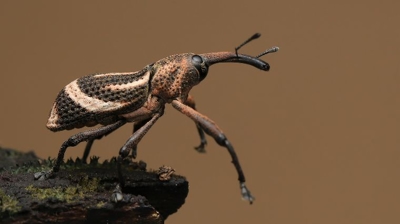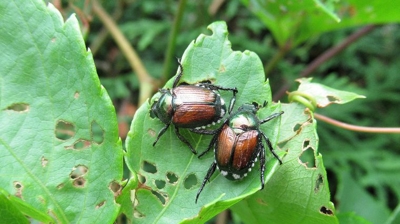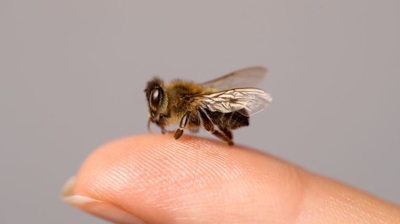
Bumble Bees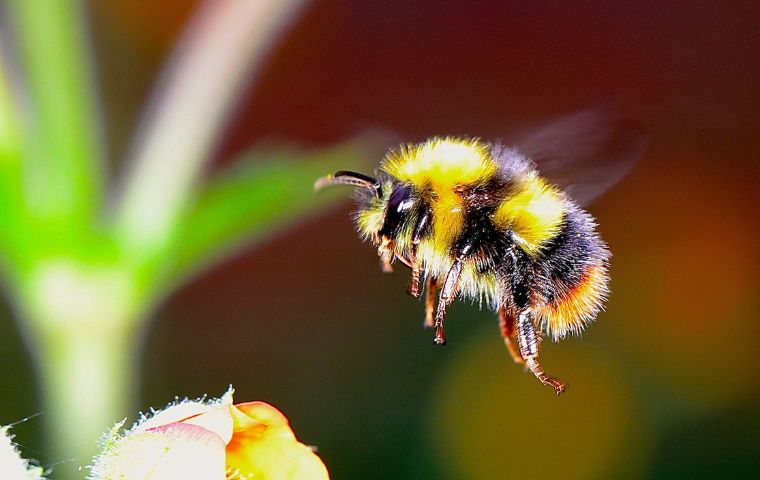
What Are Bumblebees?
Bumblebees are large, fuzzy bees, and essential pollinators, belonging to the genus Bombus, within the family Apidae. They are known for their distinctive black and yellow striped appearance, though some species may have other color variations, such as orange or red. Bumblebees are generally larger and hairier than honeybees, which helps them collect and transfer pollen effectively, making them incredibly valuable for pollination, particularly of wild plants and crops.
Are Bumblebees Harmful?
Bumblebees are not inherently dangerous to humans, and they are generally not aggressive. They do have the capability to sting, but they will only do so when they feel threatened or provoked. Here are some important points to consider regarding bumblebee safety:
- Stinging Behavior: Bumblebees will typically only sting if they perceive a threat to themselves or their nest. Common situations that may trigger a sting include accidentally squeezing or handling a bumblebee, disturbing their nest, or stepping on one.
- Defensive Nature: Bumblebees are not naturally aggressive and are much less likely to sting than some other stinging insects, like wasps and hornets. Their primary goal is to forage for nectar and pollen and maintain their colony.
- Multiple Stings: Unlike honeybees, bumblebees can sting multiple times without losing their stinger, so they may sting more than once when they feel threatened.
- Allergies: For individuals with allergies to bee stings, a bumblebee sting can be a serious medical concern. Allergic reactions can range from mild discomfort to severe anaphylaxis, so people with known bee sting allergies should take extra precautions.
Bumblebees are not inherently dangerous and are generally more interested in foraging for nectar and pollen than in stinging humans. Respecting their space and being cautious around them can help minimize the risk of stings, and their importance in pollination underscores the need to protect and conserve these valuable insects.
Learn more: Do Bumble Bees Bite?
Learn more: Bumble Bees Sting?
Bumblebee Appearance
Bumblebees are distinctive insects with several key physical features that make them easily recognizable. Here's what bumblebees typically look like:
- Body: Bumblebees have robust, fuzzy bodies covered in dense hair. Their bodies are divided into three main sections: the head, thorax, and abdomen.
- Coloration: Bumblebee coloration can vary by species, but most have a combination of black and yellow bands or stripes. Some species may have more subdued colors, like orange or red, instead of yellow. The specific color pattern can be used to identify different bumblebee species.
- Size: Bumblebee sizes can also vary by species, but in general, they are larger and stockier than honeybees. They typically range from about 0.4 to 1 inch (1 to 2.5 cm) in length.
- Head: The head of a bumblebee is typically black and is equipped with two large, compound eyes. They also have long, flexible antennae and a proboscis (long, tube-like mouthpart) for feeding on nectar.
- Thorax: The thorax is the middle section of the body, and it is covered in dense hair. Bumblebees have two pairs of wings attached to the thorax, with the front wings being longer than the hind wings. They also have three pairs of jointed legs, used for perching, walking, and collecting pollen.
- Abdomen: The abdomen is the rear section of the body, and it is also covered in hair. The abdomen is typically where the distinctive black and yellow stripes or bands are most prominent.
- Wings: Bumblebee wings are translucent and delicate. They have a characteristic veined appearance and are often longer than the body.
- Bumblebee Queens: Bumblebee queens are generally larger than worker bumblebees, and their size can be comparable to queen honeybees. They have a similar color pattern to workers.
- Bumblebee Drones: Male bumblebees, known as drones, are typically smaller than workers and have fewer hairs. They may have larger eyes, which are used for locating queens during mating flights.
Bumblebees are easy to recognize by their large, fuzzy bodies, distinctive black and yellow (or other colors) bands, and their buzzing flight. The exact coloration and size can vary by species, making them a diverse and fascinating group of insects.
Learn more: What Do Bumble Bees Look Like?
Learn more: Bumble Bees vs Carpenter Bees
Learn more: Bumble Bees vs Honey Bees
Bumble Bee Habitat
Bumblebees can be found in a variety of habitats, primarily in North America, Europe, and some parts of Asia. They are adaptable insects, and their specific locations can vary depending on factors such as the bumblebee species and the time of year. Here are some common places where you might find bumblebees:
- Gardens: Bumblebees are often found in gardens where they forage for nectar and pollen from flowering plants. They are important pollinators for many garden crops and flowers.
- Wildflower Meadows: Bumblebees thrive in wildflower meadows and grasslands where they can access a diverse range of nectar and pollen sources.
- Farms: Bumblebees are important for the pollination of agricultural crops. They can be found on farms where they help with the pollination of fruits, vegetables, and other crops.
- Woodlands: In wooded areas, bumblebees can be found visiting flowers that grow on the forest floor and in clearings.
- Urban and Suburban Areas: Bumblebees are adaptable and can be found in urban and suburban environments where they visit gardens, parks, and green spaces.
- Near Water Sources: Bumblebees need access to water, so you may find them near ponds, streams, or other water sources.
- Nesting Sites: Bumblebee nests can be found in various locations, including old rodent burrows, hollow trees, abandoned bird nests, and even underground. However, bumblebee nests are generally well hidden and not easily spotted.
- Mountainous Areas: In some regions, bumblebees can be found in mountainous terrain, where they visit alpine flowers.
- Hedgerows: Bumblebees are often seen foraging in hedgerows, where a variety of flowering plants can be found.
- Conservation Areas: Some bumblebee species are found in protected natural areas and reserves, especially those that are rare or threatened.
Bumblebee distribution can vary by region and season. They are more active during the warmer months when flowers are in bloom and provide ample food sources. To attract and support bumblebees, consider planting a variety of nectar-rich flowers in your garden, as this can create a welcoming environment for these important pollinators.
Bumble Bee Diet
Bumblebees are primarily herbivorous insects, and their diet consists of nectar and pollen from flowering plants. Their feeding habits serve an essential ecological role as pollinators. Here's what bumblebees eat:
- Nectar: Nectar is a sugary, carbohydrate-rich liquid produced by many flowers. Bumblebees visit flowers to collect nectar, which provides them with energy for their activities. Nectar is the primary source of carbohydrates in their diet.
- Pollen: Bumblebees also collect pollen from flowers. Pollen is a protein-rich substance that contains essential nutrients. Bumblebees use their specialized mouthparts and legs to gather pollen from the anthers of flowers.
- Water: Bumblebees need water for various physiological processes, including temperature regulation and digestion. They often obtain water from natural sources like puddles, moist soil, or dew on plants.
- Salts and Minerals: Bumblebees require salts and minerals for their health and nutrition. They can extract these essential nutrients from damp soil or by visiting certain types of flowers that provide these minerals.
Bumblebees are highly selective in their foraging habits, often focusing on specific plant species or families. They have coevolved with various flowers and have developed adaptations that allow them to efficiently collect nectar and pollen from their chosen food sources. In the process of gathering nectar and pollen, bumblebees inadvertently transfer pollen from one flower to another, playing a vital role in the pollination of many plants, including crops and wildflowers.
Learn more: What Do Bumble Bees Eat?
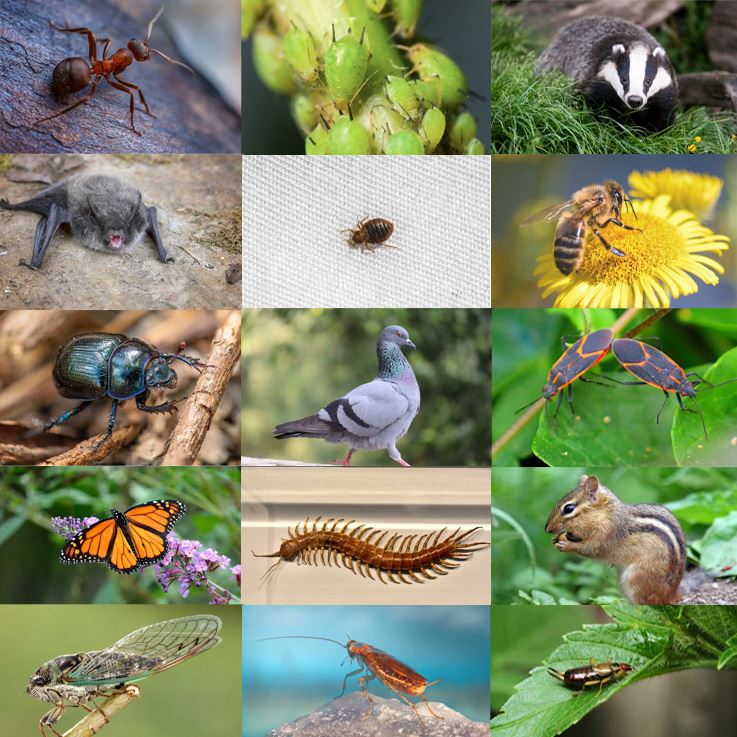
Bumble Bee Life Cycle
The life cycle of bumblebees is a fascinating and complex process that includes multiple stages, from the initial formation of a colony to the eventual production of new queens. Here is the life cycle of bumblebees:
- Queen Emergence and Foraging (Spring): Bumblebee colonies begin in the spring when a mated queen, which has overwintered, emerges from her hibernation site. The queen searches for a suitable nesting site and starts to forage for nectar and pollen to nourish herself.
- Nest Foundation (Spring): Once the queen has gathered enough resources, she constructs a small waxen pot and lays her first batch of eggs. These eggs hatch into worker bees, which are all female and will help the queen expand the nest and forage for food.
- Colony Growth (Spring to Summer): As the worker bees grow, the colony expands, and the queen continues to lay eggs. The colony's population can vary in size but typically ranges from dozens to a few hundred individuals. Workers are responsible for foraging, tending to the brood, and defending the nest.
- Production of Reproductive Offspring (Summer): As the colony grows, the queen starts to lay eggs that will develop into new queens and male bees (drones). These eggs receive special treatment and are fed more royal jelly than the worker bee eggs. Drones are reproductively functional males, and new queens will be potential founders of future colonies.
- Colony Peak (Summer): Bumblebee colonies reach their peak size during the summer, with a mix of workers, drones, and new queens. The colony is focused on gathering food and reproducing. Worker bees forage for nectar and pollen.
- Colony Decline (Late Summer to Early Fall): As summer transitions to fall, the colony's resources start to diminish, and there is a reduction in the number of new eggs. Drones and new queens leave the nest to mate. The original queen and most of the worker bees die off, resulting in the eventual collapse of the colony.
- New Queen Hibernation (Late Fall to Early Spring): The newly mated queens find protected locations to hibernate during the winter, such as underground or in leaf litter. They enter a state of dormancy, awaiting the arrival of spring.
- Repeat Cycle (Next Spring): The cycle begins again the following spring when the mated queens emerge from hibernation to establish new colonies.
The life cycle of bumblebees can vary depending on the species and environmental conditions. The timing of these stages may differ by region and climate, with some species having slightly different behaviors and schedules. Bumblebees are vital pollinators, and understanding their life cycle is crucial for their conservation and the pollination of many plants and crops.

Hear From Our Happy Customers
-
"Fantastic & Patient"
Jarvis was fantastic and patient. He answered my questions with an in-depth explanation and addressed all of my areas of concern. Would love for him to be my assigned tech going forward. Well done!
- Yonnette M. -
"Great Communication"
Tech was on time, communication was great, and he accommodated my needs.
- Alonzo W. -
"Very Knowledgeable"
The tech that arrived was courteous, professional, and very knowledgeable. He was Great.
- Uerial I. -
"Professional & Considerate"
I’m pleased with Miche services. Jarvis came today. Professional and considerate. Thank you!
- Judy B. -
"Wonderful Service"
Wonderful service. Jarvis is great. Took care of everything I needed. Thank you!
- Henry P. -
"Exceeds Expectations"
I can’t say enough positive things about this company... The tech that came out, Jarvis went above and beyond my expectations. Thank you guys, I will continue using your services.
- Jake M.

